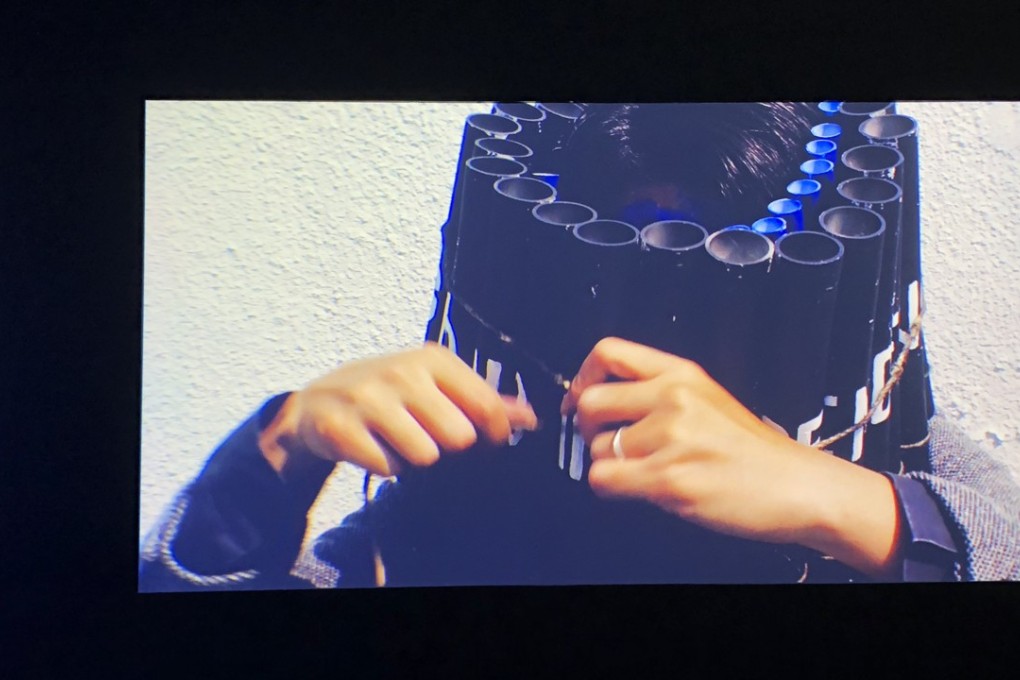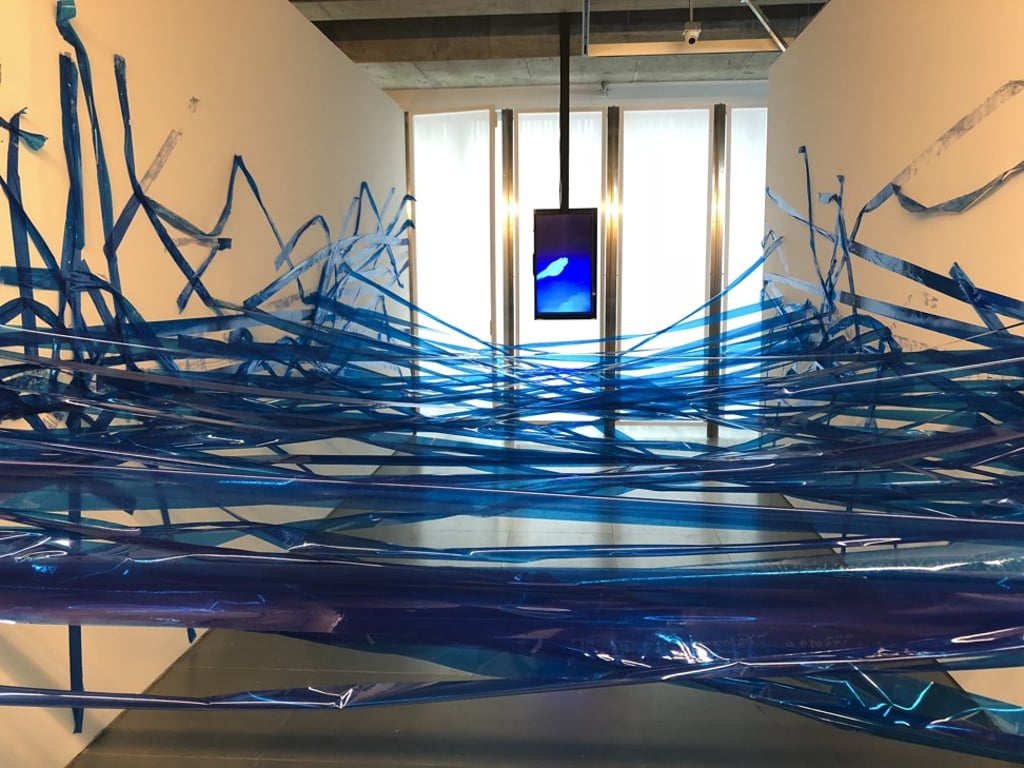How Kwan Sheung-chi’s new Hong Kong exhibition cleverly cajoles you out of political complacency
With ‘Blue is the New Black’, Hong Kong conceptual artist has put together a meticulously arranged exhibition of videos and installations that challenge our easy acceptance of political and social frameworks

The title of Kwan Sheung-chi’s new exhibition, “Blue is the New Black”, is adapted from Blue and Black, a well-known 1950s Chinese novel in which the two colours symbolise the good and bad things that happened to the protagonist during the second world war. But Kwan’s show is for today’s world, one in which geopolitical power is drastically shifting and it is not so easy to tell the good and the bad apart.
The physical demands that Kwan imposes on visitors might almost leave them black and blue. The entryway to the Edouard Malingue Gallery in Central is obstructed by a sea of criss-crossing blue tape that stretches between the two walls a metre off the ground. To get in, you have to crawl on your knees or waddle with your head down under the tape, which closely resembles a police security cordon. It is the same on the way out.
Photographic art finds a new market in China
On first look, this radical entry might arouse the thrill of transgression. But stooping beneath the tape, one feels coerced and put upon – Kwan’s cruel way of making people pay obeisance to his art while forcing visitors to be active participants.

This sets the tone for an exhibition that cleverly cajoles you out of complacent acceptance of social and political frameworks, and the dialectical oppositions that engulf Hong Kong and other parts of the world today. (There is an alternative entrance for those unable – or unwilling – to use the main one, though that, unfortunately, is not wheelchair accessible.)
Videos and installations make up the body of the exhibition. A blue sky with white clouds is used throughout as a visual trope in reference to René Magritte’s surrealist paintings. This is not just a comment about the instability of meanings and symbols – it also helps one of the exhibition’s most impressive works, Before the End: Pierrot le Fou (1965), get away with its themes of violence and suicide without coming across as crass.